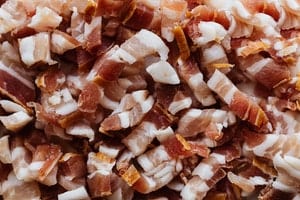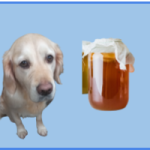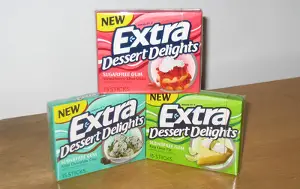
One thing that both humans and dogs have in common is that they both love the smell of bacon.
It is an all too familiar situation for all dog owners, you are cooking up some bacon and your dog is immediately by your side demanding some too.
So, is it safe to share your precious bacon with your best friend?
As tempting as it may be to succumb to those puppy dog eyes and hand over a nice rasher of raw bacon to your furry friend, bacon is food for humans and is simply not safe to feed to your dog.
In this article we are going to look at some of the most common questions which relate to whether or not it’s safe to feed your dog raw bacon.
So why can’t I give my dog raw bacon?
Although a small lick or nibble most likely won’t cause any serious harm, bacon contains a lot of preservatives, sodium and fat which can cause big problems for your dog’s digestive system in high amounts.
Not to mention the bacon grease can clog up your dog’s arteries!
So the next time your pup is giving you the eyes and asking you for some of your bacon you need to resist the temptation!
Regularly giving your dog raw bacon can also cause pancreatitis, a condition that disrupts the digestion of food.
According to the pharmacists at the Pet Health Pharmacy, smaller breeds of dogs like miniature Schnauzers, miniature poodles and cocker spaniels are more prone to pancreatitis than larger dogs.
I know it can be difficult to say no to your dog sometimes, but really its in their best interests.
Bacon’s high salt count can also cause salt poisoning for your dog.
Symptoms for salt poisoning include vomiting, diarrhea and a decreased appetite.
Similar to other salty foods, bacon can also cause your dog to get dehydrated resulting in them drinking more water which could potentially cause ‘bloat,’ a potentially lethal condition where the dog’s stomach twists.
What are the symptoms of my dog feeling poorly after eating raw bacon?
Unfortunately try as you may, if you are a regular consumer of bacon, at some point some of it will find it’s way into your dog’s mouth.
As mentioned before, if your dog ingests a small amount of bacon there shouldn’t be any real cause for alarm.
However, if your dog has managed to eat a significant amount of raw bacon this could potentially be a serious problem which would require immediate medical attention.
Perhaps the most obvious sign that your dog has eaten raw bacon is vomiting and diarrhoea as they try and purge it from their system.
Unfortunately, once they have digested it is very unlikely that they will be able to get it out of their system.
Another thing to look out for is if your dog is walking in a strange way or reacts strangely when you try and pet them, this is a sign that your dog maybe suffering from abdominal pain.
If you notice that your dog is sleeping a lot more than usual or doesn’t seem interested in activities they used to like, it may be because they are suffering from sore muscles or a fever.
Lethargy is one of the tell-tale signs that your dog has eaten something it shouldn’t have and you should call a vet immediately if they start exhibiting any of these symptoms.
If you can see that your dog is having trouble drinking water or looks weak in general, it could mean that your dog is suffering from a parasitic infection.
What about bacon fat?
Although some fats can be good for your dog’s skin and coat, bacon fat is unfortunately not one of them.
But I have written a whole article dedicated to the issue of whether dogs should or should not eat bacon grease.
Similar to vegetable oil, grease and butter, bacon fat is not safe for your dog to consume and can cause health issues such as obesity and pancreatitis.
Instead of giving your dog bacon fat, stick to feeding them Omega 3 and Omega 6 fatty acids. As always, consult your veterinarian before making any significant changes to your dog’s diet.
Can I feed my dog uncooked pork?
So looks like raw bacon is a no go.
What about other types of pork?
Unfortunately raw pork can also give your dog a parasitic infection known as Trichinella Spiralis (also known as pork roundworm.)
Along with the typical symptoms of vomiting and diarrhea, Trichinosis works its way into your dog’s muscles, causing them much inflammation and pain.
So be sure that you keep any uncooked pork products well out of the reach of your pooch!
Can I feed my dog cooked bacon?
So as we’ve established uncooked bacon is a big no no, but what about cooked bacon?
Although cooked bacon is still high in fat and salt and not exactly good for your dog, there is much less of a risk of catching a parasitic infection from cooked bacon.
As long as you feed your dog small amounts of cooked bacon and keep it as an occasional treat you shouldn’t have too many problems.
That said, bacon is very salty and rich and even small amounts can cause your dog digestive problems so think carefully about whether or not it’s worth it.
If you do decide to feed your dog cooked bacon make sure that you have drained all of the grease off first.
It is also important to remember to feed your dog small amounts, this means ½ a rasher tops if you have a big dog and ¼ if you have a smaller dog.
On the other hand, if you decide that it’s not worth the risk to feed your dog cooked bacon, you may also want to consider one of the many available “bacon flavored” dog treats currently available.
What is better for dogs, raw or cooked meat?
It is always safer to cook meat for dogs first so it is easier for them to digest it.
Dogs in the wild are accustomed to eating plenty of raw meat, however these dogs tend to have a much shorter life expectancy than domesticated dogs.
Raw meat is likely to contain harmful bacteria like Salmonella and E Coli and much more.
Properly cooking meat before feeding it to your dog ensures that these harmful bacteria have been killed off, therefore not posing a risk to your dog.
Although raw meat is not particularly good for your dog, there are plenty of fresh fruits and vegetables which are good for them.
Apples, bananas and carrots can all be eaten by your dog.
That said, It is important to ensure that your dog has a balanced diet in order to provide the proper nutrition they require.
A good rule of thumb to follow is the 90/10 rule, meaning that 90% of your dog’s food should come from proper dog food and 10% should be treats.
What is the best raw meat for dogs?
Although raw diets for dogs are controversial with many questioning the nutritional value of them. There are also those that swear by them.
Foods like chicken wings, turkey necks, beef tail bones or lamb ribs are good sources of calcium as well as protein. Organs meats like liver and kidney also contain many vitamins which are good for your dog. Muscle meats like ground beef and bison meat are rich in protein which dogs need to build strong protein.
Whatever you do, make sure that you are not feeding your dog too much fat. Overall you don’t want fat to make up more than 20% of your dog’s diet as this will cause them to put on weight. Turkey, rabbit and fish are all examples of meats that are low in fat.
As mentioned before, ensure that you consult your veterinarian before significantly altering your dog’s diet!
Closing Thoughts
So in conclusion, should you feed your dog raw bacon? Definitely not! Although small amounts shouldn’t cause too many problems, regular feeding of raw bacon to your dog can cause any number of serious health issues.
So be sure that you don’t leave any uncooked bacon lying around the house. That said, ideally you will have your dog well trained enough so that they don’t go around eating food that isn’t theirs.
Although there is a case to be made for a raw dog diet, I am yet to be convinced. Instead it is best to stick to regular dog food along with the odd treat. If you simply must feed your dog bacon make sure it’s cooked first.





